Posts Tagged With ‘College of Humanities and Public Affairs’

Taiwan: Where politics, history and geography collide
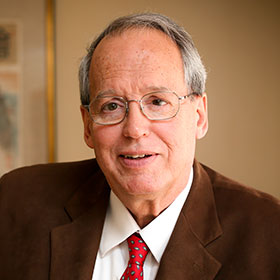
According to Dr. Dennis Hickey, distinguished professor of political science and director of the graduate program in global studies at Missouri State University, that’s essentially what happened between China and Taiwan in 1949. For decades, Taiwan was recognized as the sole government for all of China, wherein they even held the UN seat for China, until 1971.
The People’s Republic of China (mainland China) and the Republic of China (Taiwan) don’t agree on how this all transpired, and Hickey said this remains the biggest hurdle in Sino-American relations to this day. It’s fascinating and frustrating, and it’s what has driven his research for the past 30 years.
“Taiwan is no longer a dictatorship; it’s a multi-party democracy, which is great for American interests because we support democracy,” said Hickey. “It’s also a potential problem because not everyone agrees that Taiwan should remain as the Republic of China. There are some people who never want to unify with the mainland, which could reignite the Chinese civil war and involve the United States.”
If he could devise a perfect solution for the situation, he’d have them “agree to disagree” and postpone any decision for 50 years.
As an adolescent, Hickey became interested in East Asia: His father, as well as many of his friends’ fathers, had fought the Japanese in World War II, and he watched the Vietnam War unfold on the nightly news.
Policy relevance
Because China is so important– home to more than 1.3 billion people and the world’s second largest economy – Hickey strives for policy relevance in his research to give U.S. officials options to prevent a conflict with China.
He has advised heads of state in Taiwan and in the United States, even testifying before a U.S. Congressional Commission created to monitor America’s relationship with China. His credibility with other academics, the media and government officials rests on the fact that he looks at each issue objectively.
For example, recently he was asked to conduct research on a dispute over several small, uninhabited islands in the East China Sea. He searched documents, interviewed officials, presented his findings and published an article in a top tier journal.
“In the East China Sea, these islands have three different names depending on where you are. They’re really little specks, but there’s oil and gas underneath them. They’re claimed by China, Taiwan and Japan. China and Taiwan both believe that Japan stole these islands during the first Sino-Japanese war in 1895, and they want them back,” said Hickey. The Japanese government formally nationalized the islands in 2012, “sparking the largest anti-Japanese riots in that realm of the world since WWII,” he added.
“Now when I visit Taiwan, I can change planes in Beijing. Why is that a big deal? Well, until recently, you couldn’t get from one side to the other directly because of the political problems. Now, there are millions of tourists from the mainland. They go and take pictures at the presidential palace and the flag. They can’t fly that flag in the mainland.”
Recent improvements
Within Taiwan, there are disagreements about whether Taiwan should be an independent country or remain as the Republic of China. Chen Shui-bian, who served as president from 2000-08, tried to promote independence, and Hickey noted that this movement eventually served to improve relations between the People’s Republic of China and the Republic of China.
“I think Chen scared the mainland. That’s when they got a little bit more reasonable instead of just bullying Taiwan,” he said. “They’re talking now, they’ve got direct trade and travel, and they’ve signed 21 major agreements in the last seven years.”
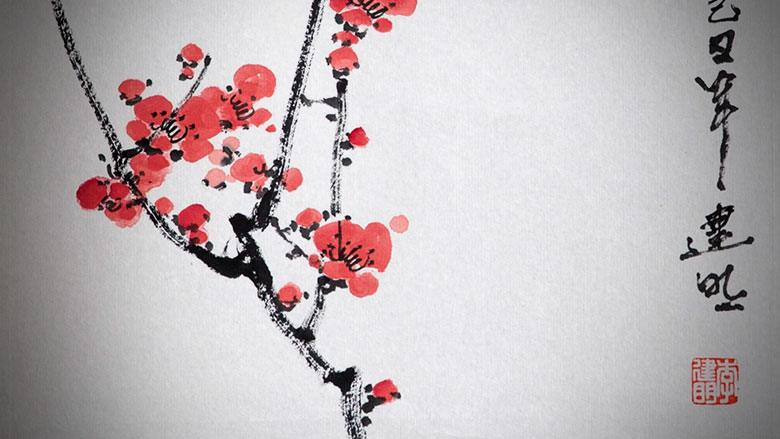
Many times, he collaborates on publications with current and former students who continually offer fresh perspective. In fact, it’s the thought-provoking questions from his graduate students that occasionally inspire his research in the first place.
Agree to disagree
Traveling to and from Asia to be part of this policy discussion for more than three decades, Hickey has established trusting relationships with people on both sides, though he jokes that a little suspicion arises from some mainland Chinese contacts. But are they against his work?
“Not at all. They know I do not support Taiwan independence. There is a Chinese government in Taipei and a Chinese government in Beijing. They are okay with that,” he said.
When he began this research in graduate school, the economic and political systems in both China and Taiwan were quite different.
“The two sides have moved closer economically, but not politically,” he observed. This is the primary reason he thinks the dispute should be shelved for 50 years.
“They should sign a peace agreement and agree to disagree what it means to be China and ratchet down any potential problems,” he said. “It’s their own internal affair. We shouldn’t be pushing them to unify or separate – just don’t let them start World War III.”
Further reading
Broaden your horizons: Consider a master’s in global studies
Recording history to save it
A famous wreck is the steamboat Arabia that sank in 1856.
“They had everything from shoes and boots – there were 4,000 of them – all sorts of sets of dishes, kegs of different size nails, picks, any kind of tool,” said Dr. Neal Lopinot. “Really it was a steamboat full of merchandise that was going out to the frontier. Some of it was nice stuff, too, but most of it was utilitarian.”
Lopinot is a research archaeologist and director of Missouri State University’s Center for Archaeological Research, or CAR. Ensuring that such remains are not destroyed is one of the many projects that keep the doors open at CAR.
The center is a research institute that conducts archaeological field work and other cultural resource management projects on a contractual basis, primarily for government agencies.

The excavation team makes progress at the Oklahoma dig site. They planned to go down to about 3.1 meters, and stand about 1.6 meters deep.
Preserving steamboat wrecks
Since 2012, CAR has been employed to survey several former islands along the Missouri River where the United States Fish and Wildlife Service and Army Corps of Engineers wanted to dig trenches to recreate spawning grounds for the endangered pallid sturgeon.
“They’ve lost their primary spawning grounds so the population’s diminished; they’re trying to recreate that,” said Lopinot. “Not just for the pallid sturgeon, but that was the main focus of it; but there are lots of other fish that also spawn in those kinds of situations. Also it increases wildlife habitat, wetlands.”
Before the trenches were dug, Lopinot and a team of researchers from CAR used magnetometry to see if there were any steamboat wrecks in those areas. They found the remains of at least one boat.
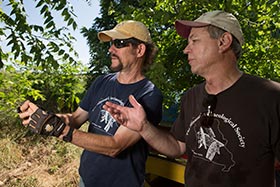
Dr. Neal Lopinot and Jack ray examine an artifact
“They decided to move the trench to avoid impacting the buried steamboat wreck,” he said. “Just about every steamboat wreck is considered to be eligible for the National Register of Historic Places, which means they’d probably have to mitigate it, which in turn means a major and very costly excavation.”
Lopinot is the primary person writing proposals and responding to requests from agencies that want to hire a group to undertake archaeological surveys and excavations. The center raises an average of about $250,000-300,000 a year in grants and contracts.
Many of CAR’s projects are work that is required by the National Historic Preservation Act. The search for steamboat remains was based on Section 106 – it involves finding out if there are any significant archaeological remains in a specific area before any work is done that might disturb the remains.
Another type of research is based on Section 110 – documenting and preserving archaeological sites. CAR has recently been involved in Section 110 research at the Three Finger Bay site on the Gibson Reservoir in northeast Oklahoma. Prior studies have found archaeological remains on a finger of land extending into the reservoir. CAR researchers have been excavating a section to determine the significance of the site.
The center has been involved in a number of prominent archaeological studies including Big Eddy, Delaware Town and the Trail of Tears.

Dr. Lopinot and his team digging at the excavation site in Oklahoma
Digging in the dirt
On a beautiful fall day in the Ozarks, Lopinot spent the day digging in the dirt – one of his favorite parts of his job. Along with CAR Project Supervisor Dustin Thompson and three other archaeologists (including two MSU alums), the team methodically skimmed dirt from an excavation area and then sifted through the dirt to find any artifacts.
On that day, the main part of the excavations was down about 1.6 meters deep and they planned to go down to 3.1 meters.
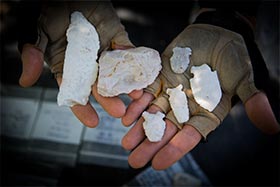 “It looks like the site was intensively occupied during what we call the Middle Woodland Period – about 100 BC to AD 400. There are other periods represented as well,” said Lopinot. “We’re going to dig a lot deeper, and we’re hoping that we find much earlier deposits that are relatively un-mixed. Hopefully there’ll be a little charcoal that we can radiocarbon date.”
“It looks like the site was intensively occupied during what we call the Middle Woodland Period – about 100 BC to AD 400. There are other periods represented as well,” said Lopinot. “We’re going to dig a lot deeper, and we’re hoping that we find much earlier deposits that are relatively un-mixed. Hopefully there’ll be a little charcoal that we can radiocarbon date.”
Stone artifacts cannot be dated because the method requires carbon from formerly living plants and animals. At this site, they have been looking for plant remains such as hickory nutshell fragments or wood that has been carbonized. Bones and shells can also be dated because they are also from once-living animals. In dating stone artifacts, for example, an archaeologist tries to find dateable materials as close vertically and horizontally to those artifacts, documenting the precise location of each.
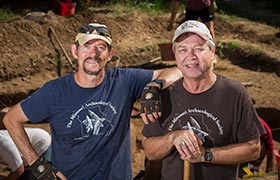 Lopinot and Jack Ray, CAR assistant director and research archaeologist, recently had some of their research from the Big Eddy site near Stockton, Missouri, published in the “Proceedings of the National Academy of Sciences” and Lopinot was the principal author of an article published on the construction of Monks Mound, the largest mound at the largest site in North America, in the “Midcontinental Journal of Archaeology.”
Lopinot and Jack Ray, CAR assistant director and research archaeologist, recently had some of their research from the Big Eddy site near Stockton, Missouri, published in the “Proceedings of the National Academy of Sciences” and Lopinot was the principal author of an article published on the construction of Monks Mound, the largest mound at the largest site in North America, in the “Midcontinental Journal of Archaeology.”
Hands-on guy wants to re-democratize society
“It had a tremendous impact on the way that I viewed things, like differences in educational opportunities and outcomes,” said Stout. “It taught me a lot how just by virtue of the family I was born into and the community and neighborhood that I lived in, how I had certain advantages and opportunities growing up that a large number of people didn’t have.”
“In terms of my background, I really became interested in the progress of education and how we have a systemic issue that reproduces class and racial inequalities in our society.” — Dr. Mike Stout
Stout’s parents, a pharmacist and a nurse, inspired him to go into a career helping others. Instead of entering a health field as he originally intended, though, he has become an instrument for change by helping groups of people have a voice that ordinarily feel isolated or underrepresented.
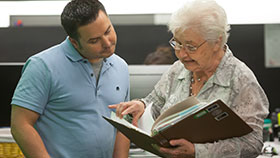 He’s a pioneer in the research of social capital – the concept that some resources are accessed more readily through connections and trust with other individuals. Throughout his career, he has repeatedly seen that a more diverse group of social connections – including friends, neighbors and colleagues from a variety of backgrounds – opens up more opportunities and encourages feelings of efficacy for all involved.
He’s a pioneer in the research of social capital – the concept that some resources are accessed more readily through connections and trust with other individuals. Throughout his career, he has repeatedly seen that a more diverse group of social connections – including friends, neighbors and colleagues from a variety of backgrounds – opens up more opportunities and encourages feelings of efficacy for all involved.
“College made me realize I was much more interested in political, social and economic forces in society and how those limit opportunities,” he said. “To be honest, if I would have gone to another undergraduate university that wasn’t located in a major city in the middle of kind of a big ghetto, I probably would have ended up continuing on with my med studies or getting into finance. Something that pays a little bit better than what I’m doing right now.”
Checking out Missourians’ civic health
Since 2010, a primary focus of research for Stout has been the production of the statewide Civic Health Index (the second was released in 2013, with another scheduled in 2015). This study looked at levels of participation in public forums, volunteer opportunities, neighborhood collaboration, voter registration, voter turnout and involvement in non-electoral political activities. These factors reveal a picture of how engaged citizens are in their communities and how much they invest in making their communities better.
“My work involves taking the expertise of faculty members, including myself, on campus and using it to provide information for local leaders, citizens and other stakeholders in the community to make better decisions about how we can collectively self-govern and increase democratic practice in community problem solving.” — Dr. Stout
To fulfill Stout’s goal of building a network of scholars and decision makers who advocate for collectively addressing community problems, he collaborated with scholars and practitioners from five other Missouri universities and Missouri Campus Compact for the 2013 report.
“What the Civic Health Index is examining is the health of the nonprofit sector – sometimes called civil society – and it shows us that the private, public and nonprofit sectors don’t operate in isolation. How our community is doing influences how representative our politics are. How our economic institutions are functioning determines how stable our communities are. How our economic sector influences our political sector determines the resources that flow through civil society, versus flowing through the private sector, and so on.”
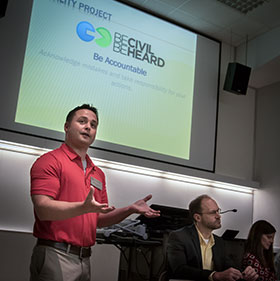 Stout, working along with the National Conference on Citizenship, has served as the main facilitator on this massive undertaking. It’s no big deal – he’s been busy his whole life, he laughed.
Stout, working along with the National Conference on Citizenship, has served as the main facilitator on this massive undertaking. It’s no big deal – he’s been busy his whole life, he laughed.
But one of the weaknesses of the report (scheduled to be released in September 2015 with analysis being conducted by the Center for Information on Civic Learning and Education (CIRCLE) at Tufts University) is that the data is collected at a national level and then filtered down to the state level.
“You really can’t – other than at the state level – dig down into what’s actually happening in different parts of the state, which limits the practical application of using this to inform policy.”
To make it more representative of what is occurring in individual communities, Stout designed a strategy to have the 19 local councils of governments in Missouri administer a version of the survey to its constituents. He’s certain that the results will be more meaningful to economic development specialists and policy makers in some of the less populated, more rural areas of the state.
‘I want to re-democratize our society’
He’s a hands-on type of guy, and he works hard to empower people often through grass roots efforts. In fact, one of his first jobs was as a phonics tutor to underrepresented minority children in Philadelphia.
Now, he teaches statistics and craves data that will back up his hypotheses. He knows it’s one of the ways that he can gather support across party lines on potential policy changes.
“The idea here is to really use data as a basis for beginning discussions in communities so that people are starting with the same assumptions,” he said. “Partisanship has become pretty bad in our society. But one area where liberals, conservatives, Republicans and Democrats do agree is that people should be empowered and have a voice in the direction of their own lives.”
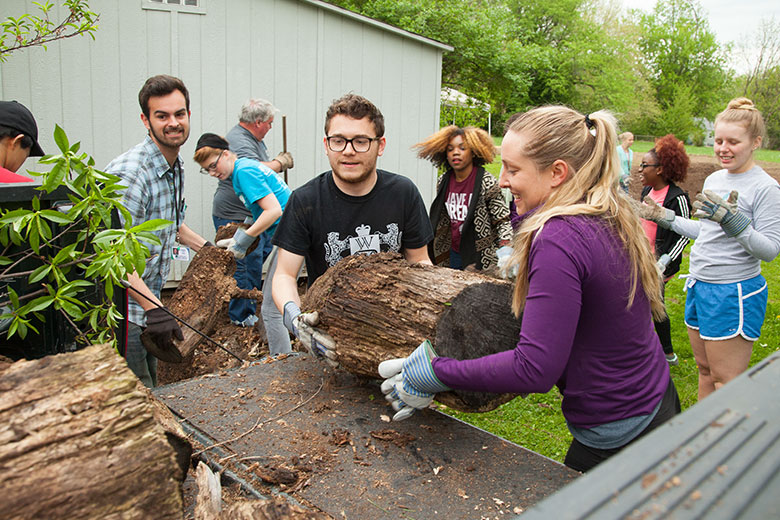
In 2010, Dr. Stout and several collaborators initiated the Ozarks Regional Social Capital Study to examine social capital and citizen participation in southwest Missouri. They found that people in the region tend to have many interpersonal connections, high levels of participation in voluntary groups (especially faith-based organizations) and high levels of trust in others. However, they also found that in the Ozarks there are relatively lower levels of civic engagement compared to the national average. “It’s influenced the way people talk about issues in the local community, has led – indirectly and directly – to new positions and resources in city government, and has highlighted civic engagement as a one of the four themes tying the 13 chapters of the city’s long range strategic plan together.”
‘No safe place for kids to play? Not a place to stay’
Feeling safe and valued starts at home, and in 2011, the Community Partnership of the Ozarks in Springfield, Missouri, joined a network of four other communities nationwide in establishing the Neighbor for Neighbor project. This initiative, supported by the Kettering Foundation and Everyday Democracy, is a community effort to minimize economic challenges by letting individual citizens voice concerns about a neighborhood and making positive changes. Currently, approximately 25 local community partners are involved to facilitate dialogues and find resources that these two poverty stricken neighborhoods can tap into to address issues like safety.
“We’re setting up opportunities for underrepresented groups to be involved in the community dialogue – it’s part of the Dialogue to Change program – about the best ways to frame and address problems. That is something everyone can get behind because it’s about empowering communities. It’s about empowering people. It’s about democratizing the community problem-solving process.”
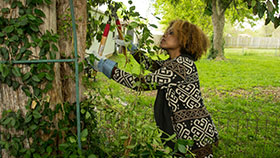 At its core, Neighbor for Neighbor, which Stout now helps to facilitate, brings people together to learn more about their neighbors and build trust – something Stout found through surveys of Springfield residents that is disproportionately low among the individuals in these particular neighborhoods. The neighbors who participate in the program talk about the issues plaguing their neighborhoods and are shown the resources at their disposal in order to make their neighborhoods feel safer – whether it be adding street lighting, building community gardens or cultivating green space for a park.
At its core, Neighbor for Neighbor, which Stout now helps to facilitate, brings people together to learn more about their neighbors and build trust – something Stout found through surveys of Springfield residents that is disproportionately low among the individuals in these particular neighborhoods. The neighbors who participate in the program talk about the issues plaguing their neighborhoods and are shown the resources at their disposal in order to make their neighborhoods feel safer – whether it be adding street lighting, building community gardens or cultivating green space for a park.
Although Neighbor for Neighbor has gained some footing, it’s a tough sell, noted Stout. The individuals in the neighborhoods are transient, so they typically don’t stay involved long. They also feel quite alienated from community leaders and socially isolated.
“Even if they wanted to get involved, they often don’t see the point because they don’t think it would make a difference. They also have the least diverse connections to social economic organizations and individuals,” he said. “It turns out, that those are significant obstacles to getting people involved in initiatives where we want to empower people.”
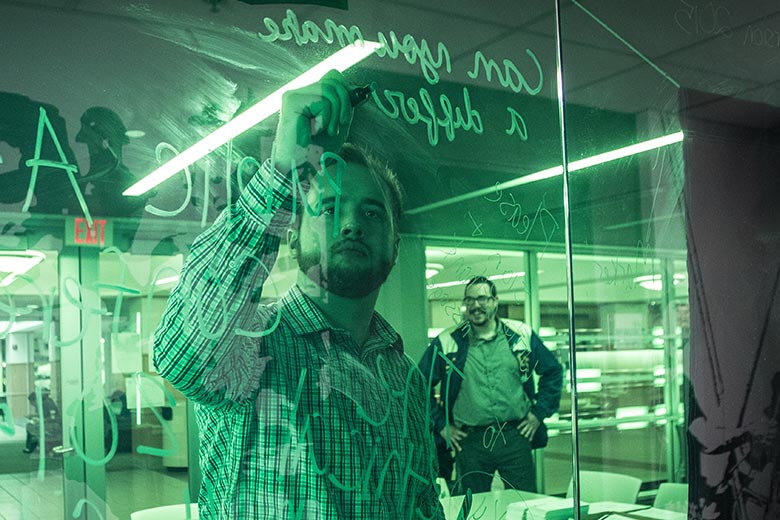
Mapping conflict
One of Stout’s earliest studies in the field of sociology further influenced his career path. Stout, an undergraduate student at the time, collaborated with a graduate student at Temple University to study 10 years of data on reported hate crimes in Philadelphia. They then geo-coded each incident to see how the crimes were dispersed geographically.
“What we found is the areas with the highest amount of racial and ethnic conflict were happening on these border lines where white neighborhoods meet black neighborhoods and where Jewish neighborhoods meet working class white neighborhoods,” he said. “That got me really interested in kind of the social structure of conflict and how this related to housing, segregation and all of these other things.”
The data was originally collected by the Philadelphia Commission on Human Relations, and his report was later distributed to elected officials and other civic leaders in Philadelphia, which pleased a young Stout. It also helped to solidify in him that one goal in sociological study should be to influence policy changes.
Another outcome of this study still creeps up and interferes with the momentum he tries to make with the Neighbor for Neighbor initiative to this day.
“People who try to get ahead and move out of those bad situations or into better situations are often faced with prejudice and discrimination and all of these things that are kind of beyond their control,” he said.
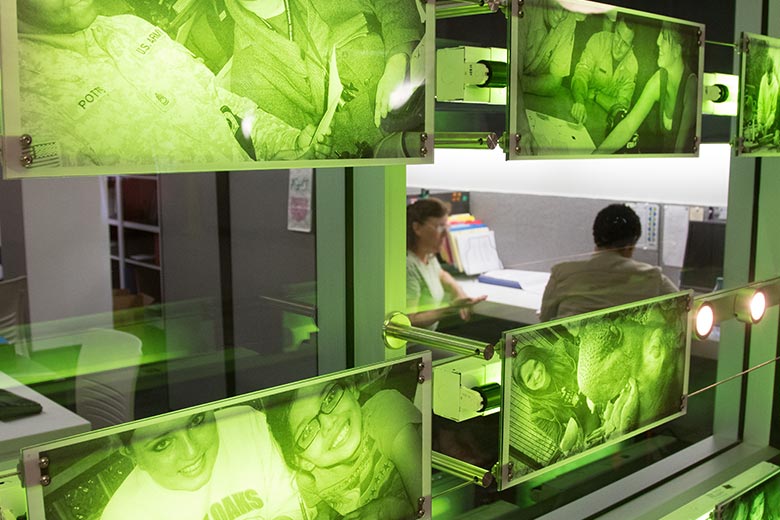
‘It’s very serendipitous the way that it worked out for me’
When Stout was looking for a position in the academic world, he wanted to find a place where he could make a difference. At the same time, Missouri State’s sociology department was shifting from a more traditional, academic sociology program to what is termed a public sociology program, where students take the classroom theories out into the community and get involved in issues they care about. The first step to that transition was incorporating community based research and engaged scholarship into the tenure promotion guidelines, which allowed Stout to teach and get involved.
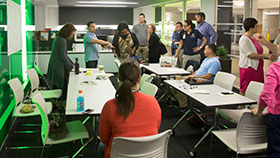 He got so involved, that in fall 2014, Missouri State University’s Center for Community Engagement was established and Stout was named its first director. In a short time, he has made huge strides on building partnerships for the Center, securing funding and gaining momentum behind projects and studies that will be done – all for the greater good.
He got so involved, that in fall 2014, Missouri State University’s Center for Community Engagement was established and Stout was named its first director. In a short time, he has made huge strides on building partnerships for the Center, securing funding and gaining momentum behind projects and studies that will be done – all for the greater good.
“The Center for Community Engagement here at Missouri State is the first such partner of the National Conference on Citizenship in the country. What I’m really trying to do is – locally, regionally, statewide and nationally – weave Missouri State as one of the central nodes for research and practice on social capital and civic engagement in the country. That’s kind of the bigger goal.”
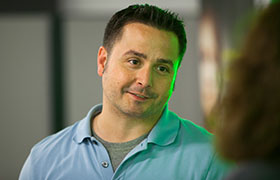 After Dr. Stout completed his dissertation, Racial and Social Economic Inequality and Political Participation, he decided to expand beyond electoral politics. He realized that so many decisions and agents of change happen outside of the scope of elections.
After Dr. Stout completed his dissertation, Racial and Social Economic Inequality and Political Participation, he decided to expand beyond electoral politics. He realized that so many decisions and agents of change happen outside of the scope of elections.
The big questions: Life and death in the Middle East
The opportunity to examine such questions drew his attention to the Middle East and ultimately to Kurdish communities in the region.
Romano, who holds the Thomas G. Strong Chair for Middle Eastern Studies in the political science department, has written two books tackling life-and-death questions that affect Kurds in Iraq, Iran, Syria and Turkey. He also dissects everything from Iranian nuclear negotiations to American influence on the Iraqi constitution in his column for the Kurdish newspaper “Rudaw.”
“It doesn’t even occur to me not to be impassioned about it.…I may have met the people in question.” — Dr. David Romano
When asked how he musters fresh concern for a region whose complexity and violence drive many to bitter resignation, Romano said, “It doesn’t even occur to me not to be impassioned about it.” On reading about 200 Assyrians captured by the Islamic State, he reflected, “Their village is on the banks of the Khabur River. I’ve swum in that river. I know exactly where it is. I may have met the people in question.”

Interrupting radicalization
Romano’s tactile understanding of the Middle East and network of connections – both products of his extensive travel – are great assets to his current research, a global comparison of the factors that contribute to extremism.
The cross-case study of radical groups in Europe, Latin America and Asia seeks answers to one of today’s most anxiety-inducing questions: Why would someone be willing to take up arms for a cause?
 “In the research, that person could be anyone,” Romano said, “depending on the context and the socialization that occurs.” However, he noted, “I don’t subscribe to this idea that one man’s terrorist is another’s freedom fighter.” Accordingly, the study focuses on groups that use radical tactics rather than assessing whether their goals are radical.
“In the research, that person could be anyone,” Romano said, “depending on the context and the socialization that occurs.” However, he noted, “I don’t subscribe to this idea that one man’s terrorist is another’s freedom fighter.” Accordingly, the study focuses on groups that use radical tactics rather than assessing whether their goals are radical.
“For the purposes of this analysis, it’s the means they are willing to resort to that define whether someone’s a terrorist. Someone struggling for a clean environment for poor people will be a terrorist if they set bombs against civilians in order to accomplish it. ”
Over the course of the project, an international team of collaborators will examine some of radicalism’s most commonly cited factors, including the insertion of religious interpretations into politics, a lack of democracy, a history of colonialism and extreme poverty.
Across radical groups, youth appears to offer a critical window. “That’s when people become politically aware,” Romano said. In addition, young people are strongly influenced by peer groups, and the rise of social media has created new platforms for dangerous ideologies. According to Romano, “We’re seeing this remarkable phenomenon of the Islamic State recruiting people via Facebook.”

Engaging students at Missouri State
Yet while youth can make someone vulnerable to destructive ideas, it also marks a time of openness and growth. Romano’s scholarship has roots in his own undergraduate days, when he tagged along on a friend’s trip to Turkey. There – in the midst of a Kurdish insurgency – he found that “half the people were telling me Kurds didn’t exist in the country, and others were telling me they were fighting for their rights. Others said they were terrorists. I got really curious as to what the situation was.” A lack of Western scholarship on the issue prompted his first investigation into Kurdish identity, ideals and culture.
“Engaging students to approach issues objectively and ethically goes a long way toward fulfilling the public affairs mission [of Missouri State].” — Dr. David Romano
 Now, Romano provides similarly enriching experiences for his students, including study abroad courses and multicultural interactions – such as a celebration of the Kurdish holiday Newroz that he hosts each spring.
Now, Romano provides similarly enriching experiences for his students, including study abroad courses and multicultural interactions – such as a celebration of the Kurdish holiday Newroz that he hosts each spring.
“Engaging students to approach issues objectively and ethically goes a long way toward fulfilling the public affairs mission [of Missouri State],” he said. “When they walk out of here, they may not remember the details of dates or events, but hopefully I’ve instilled in them a way of approaching these questions… to make them better citizens. So that if someone from another ethnic or religious group moves next door to them, they will have the curiosity and background knowledge to understand them, which makes for a better society.”
Nigerian women can treat malaria, but few study hard sciences
 Dr. Jamaine Abidogun, professor of history at Missouri State University, has been interested in Nigeria and indigenous knowledge for a number of years. She won her first Fulbright award to conduct research in Nigeria in 2004-05 and completed her second research trip in 2014. She learned that many Nigerian girls and women have a great deal of indigenous knowledge related to medicine and agriculture, but few of them pursue formal education in the hard sciences. She wanted to know why.
Dr. Jamaine Abidogun, professor of history at Missouri State University, has been interested in Nigeria and indigenous knowledge for a number of years. She won her first Fulbright award to conduct research in Nigeria in 2004-05 and completed her second research trip in 2014. She learned that many Nigerian girls and women have a great deal of indigenous knowledge related to medicine and agriculture, but few of them pursue formal education in the hard sciences. She wanted to know why.
“In this Fulbright research project, the main goal was to identify indigenous knowledge, specifically science knowledge, and see how it can be used in formal education and the sciences to help increase women’s participation by the time they get to higher education, to university level,” said Abidogun.
Igbo women act as herbalists, healers
Abidogun primarily studied the Igbo culture in her most recent research. She was surprised about the amount of indigenous knowledge that is still in practice.
“So we met a man and his son that have a thriving business in setting bones,” she said. “While a lot of that practice was banned during colonialism, in the last 10 or 15 years they’ve actually been asked to come into the Western clinics and hospitals that are Nigerian-run to demonstrate their techniques, because they have a better rate of retaining muscle mass with recovery of broken bones..
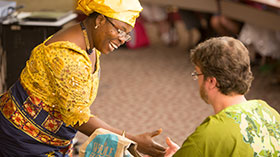 “And then for the women, so many women still used most of the herbal remedies from their grandmothers and great-grandmothers. Even though they had access to clinics, they said they just knew that practices of their ancestors worked and there wasn’t any reason to go pay a doctor’s fee when you knew that these things were taking care of it.”
“And then for the women, so many women still used most of the herbal remedies from their grandmothers and great-grandmothers. Even though they had access to clinics, they said they just knew that practices of their ancestors worked and there wasn’t any reason to go pay a doctor’s fee when you knew that these things were taking care of it.”
Abidogun said Igbo women are responsible for taking care of their daughters after they give birth; and the practices they use to prevent bleeding or hemorrhaging is nearly identical to Western medicine practices. In addition, indigenous herbs are used that support these practices.
“Women traditionally hold a significant amount of medical knowledge, even if they’re not officially herbalists,” she said. “Out of the people that I interviewed both this time and some interviews that I did in 2004-05, any adult woman could give me the basic remedies for malaria or dysentery. They knew the basic properties of several herbal plants – like for stomachaches you use lemon grass.
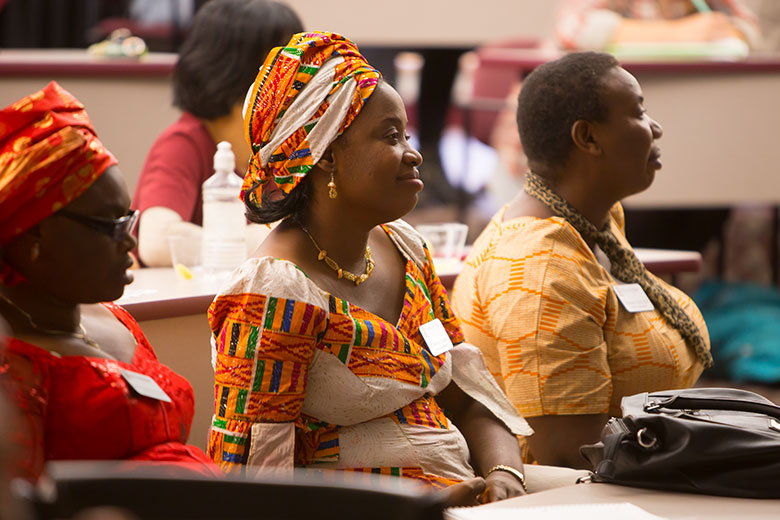
Indigenous knowledge does not lead to formal education
Despite the fact that many Igbo women and girls know a great deal about medicine and agriculture, Abidogun said the number of girls who study hard sciences – such as chemistry, biology, physics or astronomy – is very low.
“The education system is really strong in terms of the hard sciences, but the integration of indigenous knowledge is really lacking because, just like a lot of other cultures, ours included, people tend to think of it as folk lore.” — Dr. Jamaine Abidogun
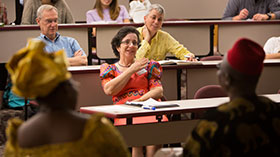 Abidogun and her colleagues from Missouri State and the University of Nigeria are developing curriculum that would incorporate indigenous knowledge into the teaching of hard sciences. They are optimistic that their recommendations may be implemented by the Enugu State Board of Education.
Abidogun and her colleagues from Missouri State and the University of Nigeria are developing curriculum that would incorporate indigenous knowledge into the teaching of hard sciences. They are optimistic that their recommendations may be implemented by the Enugu State Board of Education.
“I really hope and I think that we’ve made some of the right contacts to, one, integrate as much indigenous science as possible into the national science curriculum for Nigeria,” said Abidogun. “Then, two, see that the historical gender assignments are talked about and included in that curriculum so that girls in particular, but also boys, have a respect for the fact that science is for both genders.”
Economics professors look for value in the night sky
In a time where the importance of outsourced goods is the topic of most economic discussions, the night sky has not had its due as an economic resource. That’s an issue economics professors Dr. Terrel Gallaway and Dr. David Mitchell hope to address.
Gallaway and Mitchell, along with professor Dr. Reed Olsen, have spent six years researching the question: what really is the overall economic value of the night sky? Assessing the value and importance of the night sky could mean millions more dollars for tourism industries and other key areas.

Gallaway and Mitchell, along with professor Dr. Reed Olsen, have spent six years researching the question: what really is the overall economic value of the night sky?
Today, the wonder of a clear night sky is threatened by the careless use of artificial light. Research shows about 25 percent of electricity that is produced in the U.S. is used for lighting and an estimated 30 percent of that is wasted as light pollution—about $25-30 billion dollars a year. The two Missouri State economics professors are looking to determine how much Americans are willing to do to address this dilemma.
The team conducted numerous surveys that ask average citizens questions like “how much do you think the night sky is worth?” and “how much would you pay to travel to this certain place?” in order to obtain an estimated value of dark night skies.
“Tourism turns out to be one of the most important industries concerning the night sky,” said Gallaway. “Typically national parks have something they are trying to protect, and what they are trying to protect is dark night skies.”
Gallaway and Mitchell focused their research on western national parks and areas like the Colorado plateau, where the sky is more pristine and there are more protected areas to incorporate in their research. This area of the U.S. brings in millions of dollars each year for travel and tourism and has huge potential because of its protected lands and views of the night sky.
“The night sky impacts wildlife, different types of flowers and trees and even migration,” said Mitchell. “If not protected, you’re in essence destroying half of the environment.”
 Along with the natural effects of the night sky, Gallaway and Mitchell have identified some health issues caused by the lack of it. Light often tricks the body into staying awake even if rest is needed, opening the door for major physical and mental issues to occur.
Along with the natural effects of the night sky, Gallaway and Mitchell have identified some health issues caused by the lack of it. Light often tricks the body into staying awake even if rest is needed, opening the door for major physical and mental issues to occur.
“It’s not just aesthetics,” Mitchell said. “The lack of an adequate sleep can lead to obesity, attention deficit hyperactivity disorder and even cancer.”
According to Mitchell, there is immense documentation that states when people don’t get good sleep at night, it interferes with their hormones. “In women, this could mean higher incidences of breast cancer,” said Mitchell. Other chronic conditions that could occur include diabetes, migraines and hypertension.
Though these health problems are preventable, determining the monetary value of the night sky may be a complicated task to accomplish. However, Gallaway and Mitchell don’t mind leading the way.
This research yielded the first grant the economic professors received from the National Park Service for this trail-blazing research. Although there have been studies conducted concerning the conservation of America’s natural resources, little to no research has been done focusing primarily on night skies.
“Within the social sciences, especially with economics, there hasn’t been very much research done on this topic at all,” said Gallaway, “which sort of makes us the pioneers in this field.”
Looking beyond the surface to reveal our hidden past

During the pre-Civil War period, Henry McKinley owned about 900 acres of land and held about 15 slaves. Sobel’s field work involved attempting to locate slave quarters at the site.
Growing up, Sobel enjoyed learning about history and the natural environment. “I have always been interested in the human past,” she said. “The field of anthropology, specifically the sub-field of archaeology, brought all my interests together. Archaeologists investigate the human past by studying the material remains of past human activity.”
Sobel, who recently co-authored several chapters in the book, “Chinookan Peoples of the Lower Columbia” and has received several grants for work on the Trail of Tears, has long been excited about working on projects involving indigenous and marginalized social and ethnic groups.
Almost from the start of her career, Sobel was drawn to the study of indigenous Americans. “Some of my earliest experiences in that area occurred when I was in college, when I did an internship with the National Park Service at the Little Big Horn National Monument in Montana, where I got to know some Crow, Cheyenne and Lakota people.” During college, she also interned with the U.S. Fish and Wildlife Service in Nevada, in the homeland of Paiute people. These experiences helped her see the benefits of partnerships between archeologists and the descendants of people they study, a practice she has continued with her other projects.
Bringing out a people’s past in ways that haven’t been told completely, or honestly, is one way of bringing about greater equality today, according to Sobel.
“A broader interest I have is trying to help bring to light the heritage of traditionally marginalized social, ethnic and cultural groups – indigenous Americans, African Americans, uneducated immigrants, all of which is a broader movement in recent decades in anthropology, history and other fields. That is an area that is especially appealing to me because it has so much relevance to people today.”
Closer to campus, Sobel, along with graduate and undergraduate students, has been exploring these issues among Greene County pioneers. Part of this project involves the archaeology of two nearby sites – the Nathan Boone homestead in Ash Grove, Missouri, and the McKinley farm in Walnut Grove, Missouri.
The work focused on spatial layout of the sites, the buildings and other structures, as well as graveyards. Sobel’s group, with the assistance of Dr. Kevin Mickus, MSU professor of geology, used ground penetrating radar to reveal underground items, including several graves that were hidden by time. Some of those interred were likely slaves, and buried with them, some of the history of African Americans in southwest Missouri.
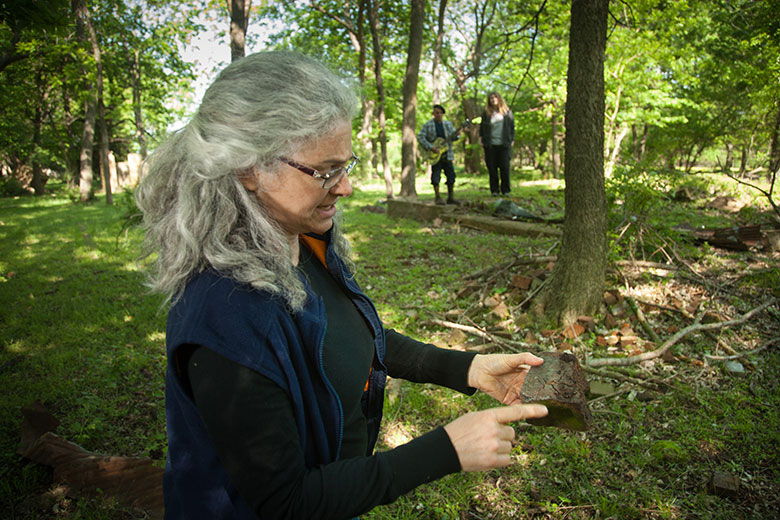
“Looking at the trajectories of McKinley family members, as well as of people who were slaves under McKinley, and their descendants gives us insight into race relations and African American heritage in this region.” – Dr. Elizabeth Sobel
Although southwest Missouri did not have large slave populations, there were some slave owners. One of the larger operations in the area was the McKinley farm, where Sobel conducted her 2013 archaeological field school. During the pre-Civil War period, Henry McKinley owned about 900 acres of land and held about 15 slaves. Sobel’s field work involved attempting to locate slave quarters at the site. Because there is not much of a written record from an African American perspective from that era, archeological evidence can yield unique information about slaves’ daily lives.
While she hoped to find evidence of slave quarters at the McKinley site, she and her students were unable to do so. “It was somewhat disappointing, but not unexpected,” Sobel said. “Slavery did not occur on a large scale in southwest Missouri. Sometimes owners and slaves would live together. Or, owners would initially build a small, basic structure for themselves, and later move into a larger house while using the earlier structure as slave housing.” Buildings often had minimal foundations and were made of wood, according to Sobel, and re-used for many purposes thereafter, so little or nothing remains from the original structure as archaeological evidence.
Nonetheless, by combining what written records exist from the antebellum period, along with oral history and artifacts gathered from these and other archaeological sites, researchers can provide a clearer picture about the lives of African Americans as well as Euroamericans during this period.
“Looking at the trajectories of McKinley family members, as well as of people who were slaves under McKinley, and their descendants gives us insight into race relations and African American heritage in this region.”
Scholar explores one of world’s oldest Buddhist Cultures
But it is. And that’s one of the things that attracted Buddhist studies scholar Dr. Stephen Berkwitz to Sri Lanka in the first place.
Although Berkwitz, professor of religious studies and current department head, originally hails from Minnesota, he has long harbored an interest in Asia.
“I became interested in studying Buddhism, particularly Buddhism in Sri Lanka, which has a very long history,” he said.
“I chose Sri Lanka as a location for my research because it continues to house a living Buddhist culture and the language that is spoken there is more closely related to the ancient Indian languages I was studying in graduate school.”
Buddhist tradition

This reclining Buddha is at a temple in Sri Lanka. It had been neglected and even damaged before steps were taken in recent years to renovate the archaeological site. Photo by Stephen Berkwitz.
Instead of focusing on the arguably more familiar Zen or Tibetan traditions, Berkwitz was drawn to Theravada Buddhism. “I was and remain interested in Theravada Buddhism, which does have a very long history and a more conservative orientation,” he said. “That combination I find intriguing – that commitment to preserving an ideal against pressures to change. Sri Lanka is particularly dedicated toward that preservation ethos. Its close connection to India also gives it a distinctive development compared to other forms of Buddhism.”
Unlike many Buddhist studies scholars, however, Berkwitz has chosen to focus on literary efforts beyond the canonical. “My research has been focused on Sri Lankan Buddhist history and literature primarily,” he said. “One thing that probably characterizes my work and interests is to go outside of a strictly monastic setting and look at how the Buddhist religion was expressed and practiced in the wider society.”
Recent research
An example is his recently published book, “Buddhist Poetry and Colonialism: Alagiyavanna and the Portuguese in Sri Lanka,” which explores the tumultuous change one poet experienced as Sri Lanka was colonized by the Portuguese. The verses of poetry translated in the book provide a window into the tremendous religious and cultural transformations of the early 17th century, when Europeans and Asian Buddhists sustained and intensified exchanges.
Berkwitz began the research for this book in 2005, attained a Fulbright scholarship to continue the research, learned to read Sinhala poetry and the Portuguese languages and spent seven months in Sri Lanka.

This is Somawathiya Chaitya, a “stupa” (domed Buddhist structure). It is located within Somawathiya National Park. Tradition holds that it was built in the second century BCE to enshrine a relic of the tooth of the Buddha. Photo by Stephen Berkwitz.
He also received a Visiting Research Fellowship to Ruhr-Universität Bochum in Germany in 2011-12. During that time, he made several research trips to Portugal to study the colonizer’s views of Buddhism.
During his fellowship in Germany, Berkwitz further explored the Portuguese encounter with Buddhism in Asia. “There is a large German government-funded project, ‘Dynamics on the History of Religion between Asia and Europe,’” he said. “I was among about a dozen international Fellows invited to do research, with my focus being the encounter between the Portuguese and Asian Buddhist in the 16th and 17th centuries.”
Indeed, there are only a handful of scholars in the world who focus on the areas Berkwitz studies, but that doesn’t diminish the growing importance of his work.
“It’s a small number, but it’s timely because there is a great deal of interest in the humanities in general to look at the history of cultural encounters,” Berkwitz said. “By looking at these encounters, scholars are seeing potential for understanding the role these exchanges had for shaping the development of people and places in the modern world.”
Studying civic engagement in Missouri
Using the community as a laboratory for his research, Stout, along with colleagues Drs. John Harms and Tim Knapp, conducted a series of community assessments investigating how social connectedness, membership in voluntary associations and participation in the community are related to economic opportunity.
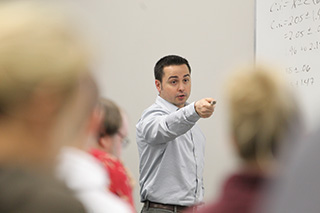 “We want to inform policy … if we can weave together a civic infrastructure that is more inclusive, then more people will be empowered to have a voice in the future of their communities and their own lives,” Stout said.
“We want to inform policy … if we can weave together a civic infrastructure that is more inclusive, then more people will be empowered to have a voice in the future of their communities and their own lives,” Stout said.
The group also initiated a research project examining social capital and citizen participation in southwest Missouri.
They found that people in the region tend to have many interpersonal connections, high levels of participation in voluntary groups (especially faith-based organizations) and high levels of trust in others. However, their study revealed lower levels of civic engagement compared to the national average.
In 2010, Stout, Harms and Knapp completed the first-ever State Civic Health Assessment and they are now working on the second.
More recently, the team collaborated in the Neighbor for Neighbor initiative to bridge gaps between diverse populations within neighborhoods affected by economic hardships.
“The idea is to use small incremental changes to build trust, to increase social connectedness, and to empower people to work together to solve problems,” said Stout.

